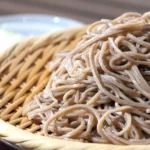Oreos, popular sandwich cookies have bioengineered food ingredients like high fructose corn syrup, canola or palm oil, and unbleached enriched flour. However, some Oreo packaging only mentions “CONTAINS A BIOENGINEERED FOOD INGREDIENT.” This discrepancy likely arises from U.S. regulations requiring labeling only when bioengineered content exceeds 5% of the total product.
Want to learn more about bioengineered food ingredients in Oreos and their healthiness?
Read this article.
What are Bioengineered Food Ingredients?
Bioengineered food ingredients are those created in labs using techniques like gene editing or genetic modification (GM).
These techniques alter specific genes in plants, animals, or microbes, giving them traits not found naturally or through traditional breeding.
Examples include certain corn, soybeans, and canola.
In the USA, foods with at least 5% of these ingredients must be labeled “Bioengineered” or “BE” to give consumers informed choices.
What are Oreos, and what Ingredients do they have?
Oreos are crispy cocoa cookies sandwiching a creamy, sweet vanilla filling.
Their key ingredients include:
- Unbleached enriched flour: This forms the base of the cookies, providing structure and a mild wheat flavor.
- Sugar: Adds sweetness and helps bind the ingredients together.
- Vegetable oil: Keeps the cookies moist and tender, typically a blend of palm and/or canola oil.
- Cocoa: The show’s star, giving Oreos their rich chocolatey taste and dark color.
- High-fructose corn syrup: Another sweetener adding a touch of sweetness and texture.
- Leavening agents: Baking soda or calcium phosphate helps the cookies rise and bake evenly.
- Salt: Enhances the overall flavor profile.
- Soy lecithin: An emulsifier that keeps the ingredients blended smoothly.
- Chocolate: Adds a touch of real chocolate to the creamy filling.
- Artificial flavor: Enhances the vanilla taste of the filling.
These simple ingredients combine to create a beloved treat millions worldwide enjoy.
What Ingredients in Oreos are Bioengineered?
Several ingredients in Oreos may come from bioengineered sources. But the amount and sources depend on the region and flavor.
Here’s a breakdown of most common BE ingredients in Oreos:
- Vegetable Oil: Canola and soybean oils are often bioengineered in the USA. While some Oreo recipes may use bioengineered versions, the exact oil source isn’t always disclosed.
- Corn Syrup: High fructose corn syrup, frequently used in Oreos, can be sourced from bioengineered corn. Again, transparency on the specific corn used is lacking.
- Soy Lecithin: This emulsifier, though present in small amounts, can be derived from bioengineered soybeans. However, some manufacturers use sunflower lecithin, a non-bioengineered alternative.
Note:
Oreos may have other potentially bioengineered food ingredients, including sugarbeet or white sugar from sugarcane(depending on the source) and certain additives like emulsifiers and stabilizers. USDA has listed sugarcane varities and sugarbeets in the BE food list.
Remember,
Labeling only requires mentioning ingredients exceeding a specific threshold of bioengineered content. So, trace amounts in other sources might not be listed.
Always check the detailed ingredient list for transparency.
Do Oreo Cookies Mention “Bioengineered” or “BE” on their Packaging?
In the U.S., food manufactured after January 1st, 2022, must comply with the new bioengineered food labeling standard.
This means products with over 5% bioengineered ingredients (applies to the entire food) need to be labeled as such.

Some Oreo variations mention “BE” on their packaging as “CONTAINS A BIOENGINEERED FOOD INGREDIENT.” These variations include:
- OREO Double Stuf Golden Sandwich Cookies
- OREO Mini Golden Sandwich Cookies
- OREO Mint Flavored Creme Chocolate Sandwich Cookies
- OREO Golden Sandwich Cookies, Lemon Flavored Creme
- OREO Peanut Butter Creme Chocolate Sandwich Cookies
- OREO Toffee Crunch Chocolate Sandwich Cookies
Interestingly, these varieties mention only about one food ingredient as bioengineered, not rets of 3.
Why?
The possible reasons for Oreos not mentioning other food ingredients as “BE” on the labeling can be:
- The specific ingredients and their bioengineered content might fall below the disclosure threshold.
- Highly processed ingredients are exempt from labeling under NBFDS. This exemption might apply to some Oreo ingredients, depending on their processing level.
For complete transparency, you can check each ingredient’s status as bioengineered.
List and look for information on the Mondelez International website or contact them directly.
Are Bioengineered Ingredients in Oreos Safe to Eat?
Bioengineered food ingredients are generally considered safe by regulatory agencies like the FDA. However, some consumers may have concerns about potential long-term effects, and it’s always good to be informed about your food choices.
Are Bioengineered Oreos Unhealthy?
Bioengineered ingredients alone don’t automatically make Oreos unhealthy. Bioengineering is used to improve nutritional content or resistance to pests and others with neutral effects.
To assess the health impact of bioengineered Oreos, we need to consider the specific ingredients and their overall nutritional profile.
However, Oreos often contain ingredients like high fructose corn syrup and refined carbohydrates, which are linked to various health issues:
- Obesity and insulin resistance: These sugars quickly raise blood sugar, prompting the body to release insulin. Over time, this can lead to insulin resistance, a major risk factor for obesity and type 2 diabetes.
- Chronic inflammation: High sugar intake can trigger chronic inflammation, linked to various diseases like type-2 diabetes, heart disease, stroke, and certain cancers.
- Fatty Liver Disease: Excessive sugar consumption can overload the liver, leading to fatty liver disease, which can progress to serious liver damage. (You may find more information at Medical News Today or healthline.com).
Skip the “BE” label and focus on the food itself! Bioengineered ingredients might be safe, but their health impact depends on what they’re made of and how your body handles them.
Prioritize whole, unprocessed foods packed with nutrients and fiber for a healthy diet.
Limit highly processed stuff like sugary syrups and refined carbs, regardless of the “BE” label.
What are the Non-bioengineered Alternatives to Oreos?
Several brands offer cookies made with organic or non-GMO ingredients.
You can also bake your own cookies using non-bioengineered ingredients to have complete control over the ingredients used.
Where Can You Find More Information about Bioengineered Food Labeling?
To learn more about bioengineered food labeling, visit the U.S. Department of Agriculture’s website!
They offer clear explanations, resources, and even a searchable list of bioengineered foods.
You can also explore organizations like the Non-GMO Project or consult food manufacturers directly for specific product information.
Does Mondelez International offer any Information about the Bioengineered Content of their Products?
Mondelez International does not currently provide a comprehensive list of bioengineered ingredients in their products on their website.
However, they encourage consumers to reach out to their consumer relations team directly for specific inquiries about bioengineered content in any of their products, including Oreos.
This allows for personalized responses based on the exact ingredients and production locations involved.
Bottom Line
Oreos contain some bioengineered ingredients like corn syrup and vegetable oil, but the exact amounts and sources vary.
Labeling only mentions ingredients exceeding 5% bioengineered content, so trace amounts might be hidden.
Focus on overall nutrition and limit highly processed foods, regardless of the “BE” label. If you’re curious about specific Oreo ingredients, contact Mondelez directly for personalized information.
Remember, healthy choices go beyond bioengineered labels!
Disclaimer
This information is for educational purposes only and doesn’t replace professional medical advice. Consult a doctor for any health concerns, personalized diagnosis and treatment.





